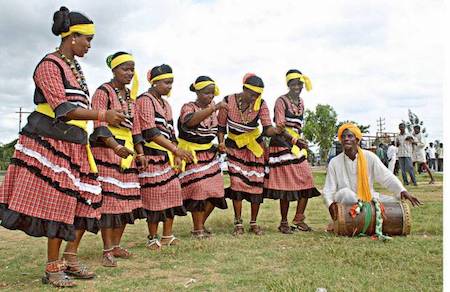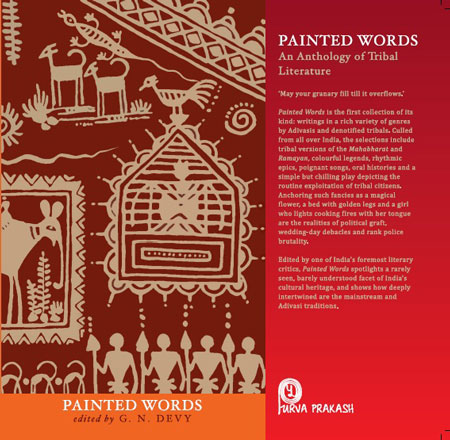In those moments when questions emerge about the fragility of the state’s constitutional principles — over what has transpired since the Dadri lynching and the killing of Kannada scholar M.M. Kalburgi, for example — it is incumbent on high constitutional functionaries to rise to the occasion and seek to answer them. These incidents have triggered a response from India’s intellectuals who have earned recognition, with a string of litterateurs returning their Sahitya Akademi awards, concerned about the silence of the august body over rising intolerance. […]
It is in this context that President Pranab Mukherjee’s statement a week ago at Rashtrapati Bhavan, where he underlined the need to rxetain diversity, plurality and tolerance as the core values of our civilisation, came as a balm. The President later re-stated those sentiments on foreign soil – in Israel, speaking to politicians in the Jewish state, suggesting that “religion should not be a basis for a state”. […]
Secularism is a bedrock of India’s Constitution, and what needs to be debated is the means to achieve the separation of religion and the state. […]
Source: “Take the cue from the President” – The Hindu, October 16, 2015
Address: https://www.thehindu.com/opinion/editorial/take-the-cue-from-the-president/article7766516.ece
Date visited: 24 November 2020
“We have no word for Nation in our language. When we borrow this word from other people, it never fits us.” – Letter from Rabindranath Tagore | Rabindranath Tagore: a universal voice – Unesco >>
[I]t was by reading and speaking to Tagore that these founders of modern India, Gandhi and Nehru, developed a theory of nationalism that was inclusive rather than exclusive. Tagore’s [collected lectures on the subject of] Nationalism should be mandatory reading in today’s climate of xenophobia, sectarianism, violence and intolerance.
Source: Ramachandra Guha, Introduction to the 2017 Penguin ed. of Nationalism by Rabindranath Tagore
URL: https://www.worldcat.org/title/nationalism/oclc/1099200491
Date visited: 24 November 2020
Truth (Satya) implies Love, and Firmness (Agraha) engenders and therefore serves as a synonym for force … that is to say, the Force which is born of Truth and Love or Non-violence.
Mahatma Gandhi on Civil Disobedience and Satyagraha in The Essential Gandhi: His Life, Work, and Ideas >>
The Keeladi excavations may alter the world’s ideas about the earliest Indians. But progress hasn’t been smooth for one of the country’s most sensational archaeological projects. It was a coconut thief who helped discover southern India’s most controversial ancient settlement. […]
Urban settlements are typically considered to be markers of how advanced a society is. The dominant view is that diverse technological innovations were necessary for the existence of settled communities. Until Keeladi was discovered, archaeologists by and large believed that the Gangetic plains in the north urbanised significantly earlier than Tamil Nadu.
Historians have often claimed that large-scale town life in India first developed in the Greater Magadha region of the Gangetic basin. This was during the ‘second urbanisation’ phase, believed to have begun around the mid-first millennium BCE. (The ‘first urbanisation phase’ refers to the rise of the Harappan or Indus Valley Civilisation, lasting from 2600 BCE to 1900 BCE.)
In recent years, the results of any new research on early India have invited keen political interest, because proponents of Hindu nationalism support the notion of Vedic culture––including the Sanskrit language, a pastoral economy dependent on cattle, and the origins of a caste hierarchy––as fundamental to the origins of Indian civilisation.
But the IVC [Indus Valley Civilisation] is a pre-Vedic culture. A long, contentious debate on whether Vedic culture originated in what is now Indian territory or was the result of complex patterns of migration and settlements has, so far, thrown up little evidence of the former. The Keeladi excavations further challenge the idea of a single fountainhead of Indian life. They indicate the possibility that the earliest identity that can recognisably be considered ‘Indian’ might not have originated in North India. […]
Archaeological practice in India is conducted by various bodies, but the central government is at the apex of the hierarchy. Any application for an excavation licence— whether it is to be conducted by the ASI, a state archaeology department or a university—has to be submitted to the Indian government for evaluation by a standing committee of the Central Advisory Board of Archaeology. […]
In popular media, the findings are likely to be reduced to the question of whether the Keeladi people were more like Aryans, the protagonists of Vedic civilisation, or Dravidians, the forebears of Tamil culture. […]
The idea of the IVC as an isolated proto-historic civilisation began to be challenged [after India’s independence]. Archaeologists began making connections between the IVC and later early historic settlements.
In essence, the research suggested that the Harappan civilisation was not some mysterious forgotten society. It was part of a larger cultural milieu that survived its demise. “There were Harappan sites in the north and west,” Lahiri wrote, “and a plethora of other cultures—some contemporary with the Harappan and others following its demise—in areas across western and central India as also in the Deccan.”
Source: “The Dig: The Keeladi excavations may alter the world’s ideas about the earliest Indians” by Sowmiya Ashok (Fiftytwo.in, 2 April 2021)
URL: https://fiftytwo.in/story/the-dig/
Date visited: 26 April 2021

Photo credit © The Hindu | Full report >>
Urging the Union and all State governments to protect the constitutional rights of the tribal people, members of the tribal and indigenous communities passed a resolution listing out their various demands at Ramanagaram on Sunday.
The Karnataka Adivasi Rakshana Parishad, a tribal welfare organisation, had organised a meet of tribals near the Government College on Bengaluru-Mysuru highway in the town in connection with 21st World Adivasi Day.
Members of 50 tribal communities from across the State, owing allegiance to the parishad, attended the meet. […]
The State government should honour the achievers in the tribal communities with ‘Adivasi Siri’ award and constitute a board/corporation for the welfare of tribal people, was one of their demands. The others included launch of special schemes to uplift the primitive tribes ‘Jenu Kuruba’ and ‘Koraga’, announcing support price for forest goods, and construction of ‘Adivasi Bhavan’ in all the taluks and district centres.
The meet also urged the Union government to accord the status of ‘Primitive Tribe’ to Chenchu (residing in Andhra Pradesh and Telangana), Irular (Tamil Nadu), Kathodi/Kathakari (Gujarat and Maharashtra), Kattunayakan (Kerala and Tamil Nadu), Thoda (Tamil Nadu) and some other tribes. […]
Cultural programme
Members of the Siddi [Sidhi], Jodugatte Irulaiga, Pardi, Malekudiya and some other communities mesmerised the audience with their scintillating performances of various forms of art. […]
Professor K.M. Metry of Hampi Kannada University and parishad president M. Krishnaiah were among those present.
Source: “Tribal people demand protection of their rights” by M.T. Shiva Kumar, The Hindu, Ramanagaram (The Hindu, 10 August 2015)
Address: https://www.thehindu.com/news/national/karnataka/tribal-people-demand-protection-of-their-rights/article7520388.ece
Date visited: 24 November 2020
Tips for using interactive maps
Toggle to normal view (from reader view) should the interactive map not be displayed by your tablet, smartphone or pc browser
For details and hyperlinks click on the rectangular button (left on the map’s header)
Scroll and click on one of the markers for information of special interest
Explore India’s tribal cultural heritage with the help of another interactive map >>
See also
Adverse inclusion | Casteism | Rural poverty
Childhood | Tribal Children’s Right to Education in India
Demographic Status of Scheduled Tribe Population of India (Census figures 2011)
Fact checking | Figures, census and other statistics
Human Rights Commission (posts) | www.nhrc.nic.in (Government of India)
Search tips | Names of tribal communities, regions and states of India
“What is the Forest Rights Act about?” – Campaign for Survival and Dignity
“Who are Scheduled Tribes?” – Government of India (National Commission for Scheduled Tribes, NCST)

Tribal Literature by G.N. Devy >>
Free eBooks & Magazine: Adivasi literature and languages >>
“India, a union of states, is a Sovereign, Secular, Democratic Republic with a Parliamentary system of Government. The President is the constitutional head of Executive of the Union. In the states, the Governor, as the representative of the President, is the head of Executive. The system of government in states closely resembles that of the Union. There are 28 states and 8 Union territories in the country. Union Territories are administered by the President through an Administrator appointed by him/her. From the largest to the smallest, each State/UT of India has a unique demography, history and culture, dress, festivals, language etc. This section introduces you to the various States/UTs in the Country and urges you to explore their magnificent uniqueness…” – KnowIndia (Government), States and Union Territories (Visited: 2 September 2023)
Learn more about India’s 28 States and 8 Union Territories – From Andhra Pradesh to West Bengal | Nutrition >>
Learn more
Crafts and visual arts | Fashion and design | Masks
eBooks, eJournals & reports | eLearning
eBook | Background guide for education
Forest dwellers in early India – myths and ecology in historical perspective
Himalayan region: Biodiversity & Water
History | Hunter-gatherers | Indus Valley | Megalithic culture | Rock art
Languages and linguistic heritage
Modernity | Revival of traditions
Tribal Research and Training Institutes with Ethnographic museums
